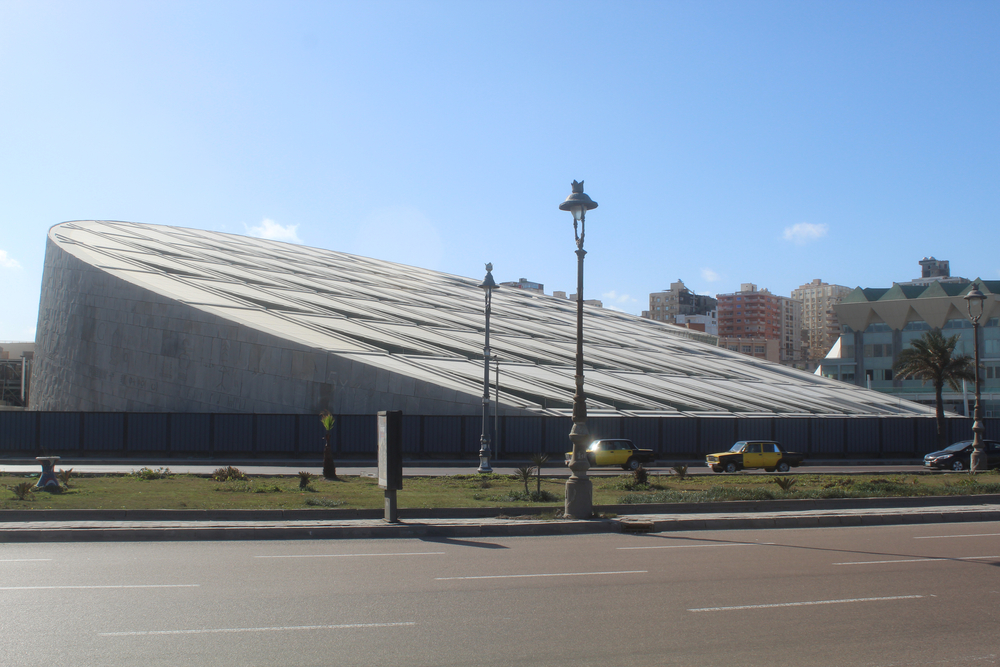random Historical Facts That Will Amaze You

Welcome to our exploration of history’s hidden gems! This blog is dedicated to unearthing intriguing and lesser-known historical facts that will leave you both amazed and enlightened. History is brimming with fascinating stories that often get overshadowed by the mainstream narratives we’re familiar with. Here, we’ll delve into those captivating snippets from the past that highlight the extraordinary, the bizarre, and the awe-inspiring events and people that have shaped our world.
Discovering these nuggets of history not only brings joy and wonder but also enriches our understanding of the human experience. From the mysterious Nazca Lines in Peru to the revolutionary innovations of Leonardo da Vinci, each fact we uncover adds a new layer to our appreciation of the past. So, read on, immerse yourself in these incredible stories, and prepare to be amazed by the marvels of history!
Ancient Civilizations
The ancient world is teeming with wonders and enigmas that continue to captivate our imagination. The Great Library of Alexandria, for instance, stood as a monumental hub of knowledge in ancient times, housing countless scrolls and texts that represented the pinnacle of learning and scholarship.
This treasure trove of information attracted scholars from all corners of the ancient world, fostering an environment of intellectual growth and exchange. Meanwhile, thousands of miles away in Peru, the Nazca Lines mystify us with their grand geoglyphs etched into the desert floor. These giant designs, only fully visible from the sky, spark endless curiosity and debate about their purpose and the people who created them.
Adding to the marvels of ancient ingenuity, the Byzantine Empire’s use of Greek fire demonstrates the sophisticated and often enigmatic nature of ancient technologies. This formidable incendiary weapon, whose precise composition remains a mystery, could continue burning even on water, securing its place in the annals of military history.
Medieval Marvels
The medieval period, often perceived as an era shrouded in darkness, was actually a time brimming with remarkable advancements and awe-inspiring feats. One such marvel is the Hagia Sophia in the Byzantine Empire, an architectural wonder that has withstood the test of time. Originally constructed as a cathedral in Constantinople, it was famed for its massive dome and stunning mosaics, symbolizing the zenith of Byzantine architectural and artistic achievement.
Equally intriguing is the legend of Vlad the Impaler, the fierce 15th-century ruler of Wallachia, whose ruthless tactics against his enemies inspired the character of Dracula. This period also brought significant innovation, including the invention of eyeglasses.
Around the 13th century, these transformative tools began to emerge in Italy, revolutionizing the way people read and interacted with their world, and greatly enhancing the quality of life for those with vision impairments. These examples illustrate that the medieval era was not merely a dark age but a pivotal period of progress and cultural development.
Renaissance Revelations
The Renaissance era, a time of unparalleled artistic and scientific innovation, produced some of the most extraordinary minds in history, among whom Leonardo da Vinci and Michelangelo stand out. Leonardo, often hailed as the quintessential Renaissance man, conceptualized a multitude of futuristic inventions. His sketches reveal designs for flying machines, such as the ornithopter, and formidable war tanks, showcasing his astounding foresight and inventive genius.
Beyond his mechanical creations, Leonardo’s “Codex Leicester” remains a testament to his boundless curiosity and intellect. This scientific and artistic journal, filled with detailed observations and hypotheses on topics ranging from astronomy to hydrodynamics, continues to fascinate scholars and enthusiasts alike.
Meanwhile, Michelangelo’s artwork in the Sistine Chapel conceals layers of hidden messages and symbols. Through his intricate frescoes, Michelangelo not only portrayed biblical scenes but also embedded subtle anatomical illustrations and veiled references, reflecting his deep knowledge and the nuanced interplay between art and science during the Renaissance. These breathtaking revelations underscore the profound impact and enduring legacy of Renaissance innovations on our world.
Revolutionary Facts
The American Revolution is replete with dramatic events and pivotal moments that have left enduring marks on history. Take the Boston Tea Party, for instance—a seemingly straightforward act of defiance that had far-reaching consequences. On that fateful night in 1773, American colonists, frustrated by British taxation without representation, dumped an entire shipment of tea into Boston Harbor. This bold gesture did far more than signal unrest; it sparked a series of retaliatory measures by the British government, known as the Intolerable Acts, which only fanned the flames of revolutionary sentiment and united the colonies against a common opponent.
One of the period’s most celebrated figures, Benjamin Franklin, made monumental contributions to both the revolution and the realm of science. Franklin’s experiments with electricity, most famously his kite experiment during a thunderstorm, were groundbreaking. By demonstrating that lightning is a form of electricity, Franklin not only advanced scientific understanding but also laid the groundwork for future innovations in electrical technology.
Similarly, the legendary midnight ride of Paul Revere has morphed into an iconic moment in American lore. However, the true story is far richer and more complex. While Revere indeed set out to warn the colonial militia of the approaching British forces, his message was part of a larger network of riders who relayed critical information across the colonies. These collective efforts ensured that the revolutionary forces were prepared for the battles that paved the way for American independence. Each of these revolutionary facts illustrates the intricate tapestry of events and personalities that shaped the birth of a nation.
Modern History
Modern history, replete with scientific advancements and pivotal moments, has fundamentally shaped the contemporary world as we know it. One significant development was the invention of the Enigma Machine, a cryptographic device used by the Germans during World War II. Its intricate encoding mechanisms posed a formidable challenge to Allied forces. However, the eventual deciphering of Enigma codes, largely thanks to the efforts of cryptographers like Alan Turing, significantly altered the course of the war by providing crucial intelligence.
Another monumental endeavor was the Manhattan Project, a highly classified initiative that brought together some of the brightest minds to develop the atomic bomb. This project, spanning multiple sites across the United States, culminated in the bombs dropped on Hiroshima and Nagasaki, which led to the end of World War II but also opened a Pandora’s box of ethical and moral considerations regarding nuclear warfare.
The Space Race represents yet another pinnacle of modern history, marked by groundbreaking achievements in space exploration. NASA’s Apollo missions, particularly the historic moon landing of Apollo 11, epitomize human ingenuity and perseverance. Concurrently, pioneers like the Soviet Union’s Yuri Gagarin, the first human to orbit the Earth, expanded the horizons of human potential and laid the foundations for future space exploration endeavors. These milestones encapsulate the relentless drive and ingenuity that have propelled humanity forward, carving out new frontiers in both technological innovation and our understanding of the universe.
Fun and Unusual Facts
History is filled with fun and unusual facts that never cease to amaze. Take the crazy history of fashion trends, for example. During the 18th century, powdered wigs were all the rage among European aristocracy, representing status and social standing, while the 1940s in America saw the peculiar rise of zoot suits—oversized jackets with wide-legged trousers—which became symbols of defiance and cultural identity. Moving on to peculiar laws from history, one might be astounded to learn that in Medieval England, it was illegal for a commoner to wear purple, a color reserved exclusively for royalty.
Equally strange were some U.S. regulations, such as a bill in the mid-19th century Tennessee law that forbade anyone from lassoing a fish. Finally, history also surprises us with incredible coincidences that defy explanation.
Consider the eerily similar lives and deaths of U.S. Presidents John F. Kennedy and Abraham Lincoln: both faced civil rights issues, were assassinated on a Friday, and astonishingly, Lincoln had a secretary named Kennedy while Kennedy had a secretary named Lincoln. These captivating snippets offer a quirky glimpse into our past, reminding us that history is not just a series of dates and events but a rich tapestry of human quirks and vibrant oddities.
Conclusion
In our exploration of random historical facts, we’ve delved into some truly fascinating and quirky pieces of history. From the dramatic defiance of the Boston Tea Party to the genius of Benjamin Franklin’s experiments, the coordinated efforts behind Paul Revere’s legendary ride, and the groundbreaking achievements of modern history like the deciphering of Enigma codes and the triumphs of the Space Race, we’ve seen how individual events and figures have shaped the trajectory of our world. We’ve also uncovered some of the more amusing aspects of history, such as the peculiar fashion trends of powdered wigs and zoot suits, unusual laws like the prohibition against lassoing fish, and the uncanny coincidences between Presidents Kennedy and Lincoln.
Understanding these riveting snippets of history is not just about entertainment; it’s a valuable exercise in seeing how past events shape our present and guide our future. By learning from history, we gain insight into the human condition, societal evolution, and the recurring patterns that can inform our decisions today.
So, why not take this knowledge and dive even deeper into the annals of history? Share these fun facts with friends and family, spark conversations, and encourage others to explore the vast and intriguing world of the past. Doing so not only enriches your own understanding but also helps to keep the flames of curiosity and learning burning brightly for future generations.


